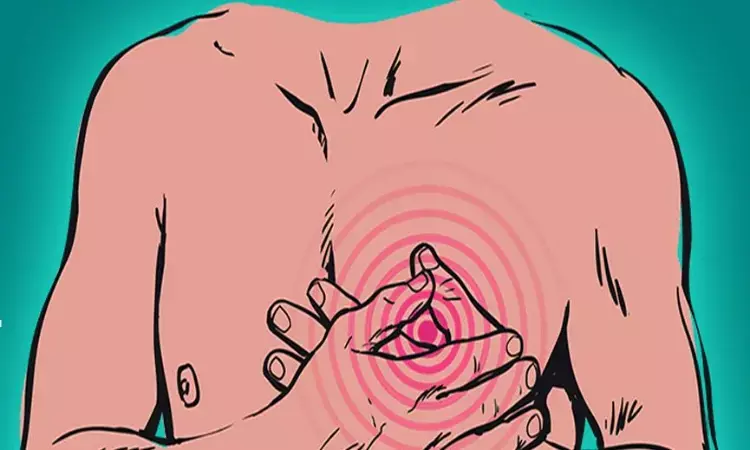- Home
- Medical news & Guidelines
- Anesthesiology
- Cardiology and CTVS
- Critical Care
- Dentistry
- Dermatology
- Diabetes and Endocrinology
- ENT
- Gastroenterology
- Medicine
- Nephrology
- Neurology
- Obstretics-Gynaecology
- Oncology
- Ophthalmology
- Orthopaedics
- Pediatrics-Neonatology
- Psychiatry
- Pulmonology
- Radiology
- Surgery
- Urology
- Laboratory Medicine
- Diet
- Nursing
- Paramedical
- Physiotherapy
- Health news
- Fact Check
- Bone Health Fact Check
- Brain Health Fact Check
- Cancer Related Fact Check
- Child Care Fact Check
- Dental and oral health fact check
- Diabetes and metabolic health fact check
- Diet and Nutrition Fact Check
- Eye and ENT Care Fact Check
- Fitness fact check
- Gut health fact check
- Heart health fact check
- Kidney health fact check
- Medical education fact check
- Men's health fact check
- Respiratory fact check
- Skin and hair care fact check
- Vaccine and Immunization fact check
- Women's health fact check
- AYUSH
- State News
- Andaman and Nicobar Islands
- Andhra Pradesh
- Arunachal Pradesh
- Assam
- Bihar
- Chandigarh
- Chattisgarh
- Dadra and Nagar Haveli
- Daman and Diu
- Delhi
- Goa
- Gujarat
- Haryana
- Himachal Pradesh
- Jammu & Kashmir
- Jharkhand
- Karnataka
- Kerala
- Ladakh
- Lakshadweep
- Madhya Pradesh
- Maharashtra
- Manipur
- Meghalaya
- Mizoram
- Nagaland
- Odisha
- Puducherry
- Punjab
- Rajasthan
- Sikkim
- Tamil Nadu
- Telangana
- Tripura
- Uttar Pradesh
- Uttrakhand
- West Bengal
- Medical Education
- Industry
High prevalence of angina with no obstructive CAD observed in females, reveals coronary angiography study

A new investigation found that there was a high prevalence of Angina with no obstructive coronary artery disease (ANOCA) in patients undergoing invasive coronary angiography. Angina with no obstructive coronary artery disease (ANOCA) was stable and was mostly seen in female patients.
The study was published in the Canadian Journal of Cardiology.
Angina with no obstructive coronary artery disease is a common and under-recognized clinical entity. It's not clear whether the referral patterns for diagnosing chest pain have changed. Hence, researchers conducted a retrospective, population-based cohort study to determine if the prevalence of patients diagnosed with ANOCA with coronary angiography has modified over time.
Between 1995 and 2020 Alberta patients who had their first coronary angiogram for a chest pain syndrome were extracted from the Alberta Provincial Project for Outcome Assessment in Coronary Heart Disease (APPROACH) database. A temporal trend analysis was performed to compare patients with ANOCA to obstructive coronary artery disease (CAD), and the predictors of ANOCA were investigated.
Results:
- 121,066 patients were included, out of which 26% had ANOCA with a mean age of 62 years. There were 31% females in the study.
- The percent of ANOCA to obstructive CAD ranged between 24.2% and 26.7% in all patients (p<0.001), 19.4% and 21.4% in patients with acute coronary syndromes (p=0.002), and 30.6% and 37.5% in patients with stable angina (p<0.001).
- Female sex, younger age, history of atrial fibrillation, and stable angina (versus myocardial infarction; versus unstable angina) were independent predictors of ANOCA.
- Traditional cardiovascular risk factors were associated with obstructive CAD.
This study allows excluding obstructive CAD with less invasive testing, especially in females.
Further reading: Patel S, Fung M, Liang Z, Butalia S, Anderson TJ. Temporal trends of the prevalence of angina with no obstructive coronary artery disease (ANOCA) [published online ahead of print, 2022 Oct 20]. Can J Cardiol. 2022;S0828-282X(22)00977-1. doi: 10.1016/j.cjca.2022.10.018
BDS, MDS
Dr.Niharika Harsha B (BDS,MDS) completed her BDS from Govt Dental College, Hyderabad and MDS from Dr.NTR University of health sciences(Now Kaloji Rao University). She has 4 years of private dental practice and worked for 2 years as Consultant Oral Radiologist at a Dental Imaging Centre in Hyderabad. She worked as Research Assistant and scientific writer in the development of Oral Anti cancer screening device with her seniors. She has a deep intriguing wish in writing highly engaging, captivating and informative medical content for a wider audience. She can be contacted at editorial@medicaldialogues.in.
Dr Kamal Kant Kohli-MBBS, DTCD- a chest specialist with more than 30 years of practice and a flair for writing clinical articles, Dr Kamal Kant Kohli joined Medical Dialogues as a Chief Editor of Medical News. Besides writing articles, as an editor, he proofreads and verifies all the medical content published on Medical Dialogues including those coming from journals, studies,medical conferences,guidelines etc. Email: drkohli@medicaldialogues.in. Contact no. 011-43720751




